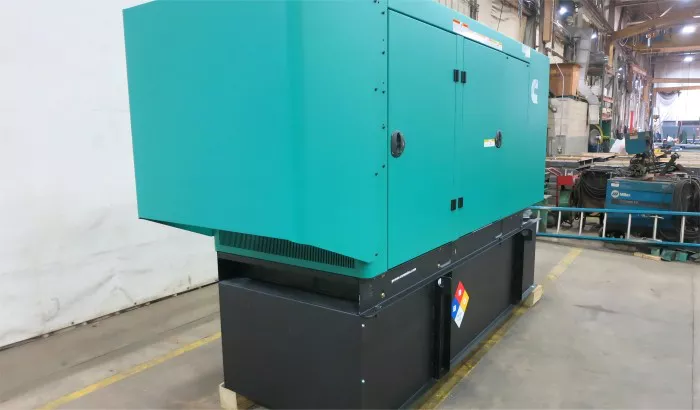Running out of fuel is a common issue with diesel generators, and restarting them after they have run dry requires specific steps to ensure they function properly. This guide will walk you through the necessary steps to restart your diesel generator after it has run out of fuel, covering safety precautions, initial checks, and troubleshooting methods.
1. Safety Precautions
1.1 Ensure Safety First
Before starting any work on the generator, ensure you are in a safe environment. Turn off the generator and disconnect any electrical loads. Wear appropriate safety gear, such as gloves and safety glasses, to protect yourself from potential hazards.
1.2 Ventilation
Make sure the generator is in a well-ventilated area to avoid the buildup of harmful exhaust fumes. If working indoors, ensure there is adequate ventilation or move the generator outside if possible.
2. Initial Checks
2.1 Check Fuel Level
Refill the fuel tank with the appropriate diesel fuel. Make sure you use clean fuel to avoid contaminating the fuel system.
2.2 Inspect Battery Charge
A fully charged battery is essential for starting the generator. Check the battery voltage using a multimeter. A voltage below 12.4 volts typically indicates a discharged battery that may need charging or replacement.
2.3 Check Oil Level
Low oil levels can prevent the generator from starting. Check the oil level using the dipstick and add oil if necessary. Use the type of oil recommended by the generator manufacturer.
3. Bleeding the Fuel System
3.1 Understanding the Need to Bleed
When a diesel generator runs out of fuel, air enters the fuel lines, preventing fuel from reaching the engine. Bleeding the fuel system removes this air and allows the fuel to flow properly.
3.2 Locate Bleed Screws
Consult the generator’s manual to locate the bleed screws on the fuel system. These are typically found on the fuel filter, fuel pump, or injectors.
3.3 Bleeding the Fuel Filter
Loosen the bleed screw on the fuel filter. Use the manual fuel pump (if available) or the electric fuel pump to pump fuel through the filter until you see a steady stream of fuel without air bubbles. Tighten the bleed screw once the air is expelled.
3.4 Bleeding the Fuel Pump
Loosen the bleed screw on the fuel pump. Pump fuel through the system until a steady stream of fuel without air bubbles flows from the bleed screw. Tighten the screw once the air is expelled.
3.5 Bleeding the Injectors
Loosen the bleed screws on the injectors. Crank the engine in short bursts to pump fuel through the injectors. Tighten each bleed screw as fuel starts to flow without air bubbles.
4. Attempting to Start the Generator
4.1 Pre-Heating the Engine
Use the pre-heat function (if available) to warm the engine. This helps in starting, especially in cold conditions.
4.2 Cranking the Engine
Turn the ignition key to crank the engine. If the engine does not start, give it a few seconds before trying again. Avoid continuous cranking for more than 15 seconds to prevent starter motor damage.
4.3 Observing the Engine
Watch for signs of the engine catching. If it starts to run but then stalls, there may still be air in the system. Repeat the bleeding process if necessary.
5. Troubleshooting Common Issues
5.1 Battery Issues
Dead Battery: If the battery is dead, use a battery charger to charge it fully. If the battery does not hold a charge, it may need to be replaced.
Loose or Corroded Connections: Inspect the battery terminals and connections. Tighten any loose connections and clean any corrosion from the terminals using a wire brush.
5.2 Fuel System Issues
Clogged Fuel Filters: Replace clogged or dirty fuel filters to ensure a steady flow of fuel to the engine.
Fuel Line Blockages: Inspect the fuel lines for any blockages or kinks that could prevent fuel from reaching the engine. Clear any obstructions.
5.3 Air Intake and Exhaust Issues
Blocked Air Filter: A blocked air filter can restrict airflow to the engine. Inspect and clean or replace the air filter as necessary.
Exhaust Blockage: Check the exhaust system for any blockages that could prevent the engine from starting. Clear any obstructions.
see also: 5 Best Whole House Diesel Generator
6. Regular Maintenance Tips
6.1 Routine Inspections
Regularly inspect the fuel system, battery, and filters to ensure they are in good condition. Replace any worn or damaged parts promptly.
6.2 Fuel Management
Keep the fuel tank filled and avoid running the generator until it is empty. Store fuel in a clean, sealed container to prevent contamination.
6.3 Scheduled Servicing
Follow the manufacturer’s recommended service schedule to keep your generator in optimal condition. This includes regular oil changes, filter replacements, and system checks.
Conclusion
Restarting a diesel generator that has run out of fuel involves ensuring safety, checking essential components, and bleeding the fuel system to remove air. By following these steps, you can effectively restart your generator and maintain its reliability. Regular maintenance and inspections will help prevent future issues and extend the life of your generator.
Related topics:
- Top 4 Portable Diesel Generator
- How Much Does It Cost to Run a Diesel Generator?
- How Long Diesel Fuel Lasts in Generators?

